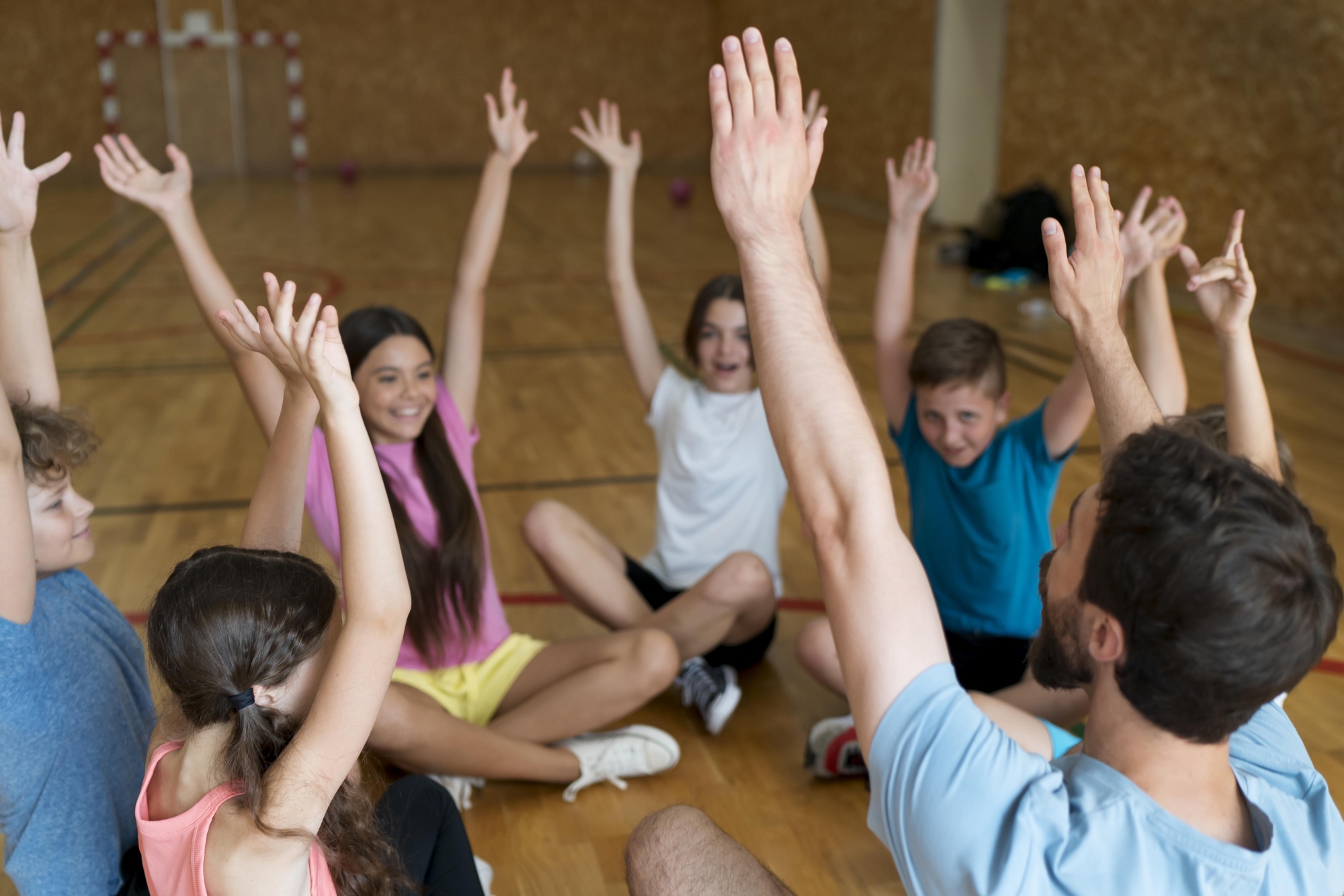28

Category
rhythmic
Age
8+
Number of participants
8-30
Duration
approx. 10 min.
Working method
group work
Musical abilities of the trainers
1 2 3 4 5 6
Competences
- concentration
- collaboration
- attention
- cooperation
- sence of rhythm
Pass the Rhythm
Team building exercise improving rhythm skills
and concentration.
AIM
The aim is to improve the rhythm skills and concentration of participants.
The game can be adapted for different levels.
The exercise develops the concentration of the participants especially among young people who have difficulty focusing.
Description
Sit in a circle, in chairs preferably.
(Can also be played standing or sitting, with different moves)
The Leader taps their foot to set the time (equal beat), and everyone follows, tapping their foot to keep the time.
The leader sets a very simple rhythm, in keeping with a 4/4 timing ie: Slap, Slap, Clap, …
1) Slap thigh with both hands, 2) Slap thigh with both hands, 3) Clap, 4) (nothing).
Everyone joins in with this rhythm
Once everyone is in time and the time is right, the leader passes a new rhythm:
Clap, Clap, Clap, …
** The leader can look to the right when passing, but it is the person on the right’s responsibility to check their left and take a rhythm when it is being passed **
The leader creates a new rhythm and passes it on;
Slap, Clap, Clap, Clap
The leader creates a new rhythm and passes it on;
Slap, Clap-Clap, Chest hit, Slap.
** The person to the right looks to the left, watches 1 or 2 rounds of the rhythm, then copies it **
** The tempo must be kept throughout **
Description
You can create more complex rhythms, sing different part of the body, different timings etc.
Participants can suggest rhythms, including rhythms from their own favourite music or culture. And the leader can change – switch who is leading suggesting different things to do & say.
comments for facilitators
The exercise could be very useful to young people who have difficulty focusing.
You may need to stop and start again multiple times. This is ok! Bring the participants back to the rhythm every time, remind them to keep the rhythm.
